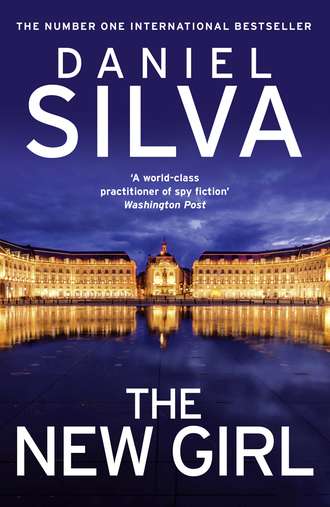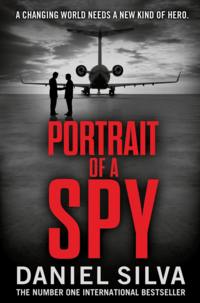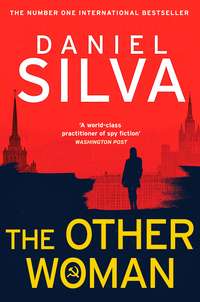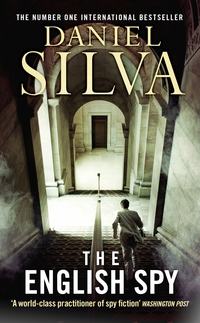
Полная версия
The New Girl
Boswell was clearly dubious. Over antipasti he finally broached the topic of the loan. Sarah feigned dispassion before informing Boswell that under no circumstances would she be lending him a single painting from the al-Bakari Collection.
“What about a Monet or two? Or one of the Cézannes?”
“Sorry, but it’s out of the question.”
“A Rothko? You have so many, you wouldn’t miss it.”
“Brady, please.”
They finished their lunch agreeably and parted on the pavements of Park Avenue. Sarah decided to walk back to the museum. Winter had finally arrived in Manhattan after one of the warmest autumns in memory. Heaven only knew what the new year might bring. The planet seemed to be lurching between extremes. Sarah, too. Secret soldier in the global war on terror one day, caretaker of one of the world’s grandest art collections the next. Her life knew no middle ground.
But as Sarah turned onto East Fifty-Third Street, she realized quite suddenly she was terminally bored. She was the envy of the museum world, it was true. But the Nadia al-Bakari Collection, for all its glamour and the initial buzz of its opening, largely saw to itself. Sarah was little more than its attractive public face. Lately, she had been having too many lunches with men like Brady Boswell.
In the meantime her private life had languished. Somehow, despite a busy schedule of fund-raisers and receptions, she had failed to meet a man of appropriate age or professional accomplishment. Oh, she met many men in their early forties, but they had no interest in a long-term relationship—God, how she hated the phrase—with a woman of commensurate age. Men in their early forties wanted a nubile nymphet of twenty-three, one of those languorous creatures who paraded around Manhattan with their leggings and their yoga mats. Sarah feared she was entering the realm of a second wifedom. In her darkest moments she saw herself on the arm of a wealthy man of sixty-three who dyed his hair and received regular injections of Botox and testosterone. The children from his first marriage would cast Sarah as a home-wrecker and despise her. After prolonged fertility treatments, she and her aging husband would manage to have a single child, which Sarah, after her husband’s tragic death while making his fourth attempt to scale Everest, would raise alone.
The hum of the crowds in MoMA’s atrium temporarily lifted Sarah’s spirits. The Nadia al-Bakari Collection was on the second floor; Sarah’s office, the fourth. Her telephone log showed twelve missed calls. It was the usual fare—press inquiries, invitations to cocktail parties and gallery openings, a reporter from a scandal sheet looking for gossip.
The last message was from someone called Alistair Macmillan. It seemed Mr. Macmillan wanted a private after-hours tour of the collection. He had left no contact information. It was no matter; Sarah was one of the few people in the world who had his private number. She hesitated before dialing. They had not spoken since Istanbul.
“I was afraid you were never going to return my call.” The accent was a combination of Arabia and Oxford. The tone was calm, with a trace of exhaustion.
“I was at lunch,” said Sarah evenly.
“At an Italian restaurant on Park Avenue with a creature named Brady Boswell.”
“How did you know?”
“Two of my men were sitting a few tables away.”
Sarah hadn’t noticed them. Obviously, her countersurveillance skills had deteriorated in the eight years since she had left the CIA.
“Can you arrange it?” he asked.
“What’s that?”
“A private tour of the al-Bakari Collection, of course.”
“Bad idea, Khalid.”
“That’s the same thing my father said when I told him I wanted to give the women of my country the right to drive.”
“The museum closes at five thirty.”
“In that case,” he said, “you should expect me at six.”
3
NEW YORK
IT WAS TRANQUILLITY, REPUTEDLY THE second-largest motor yacht in the world, that gave even his staunchest defenders in the West pause for thought. The future king saw it for the first time, or so the story went, from the terrace of his father’s holiday villa on Majorca. Captivated by the vessel’s sleek lines and distinctive neon-blue running lights, he immediately dispatched an emissary to make inquiries as to its availability. The owner, a billionaire Russian oligarch named Konstantin Dragunov, knew an opportunity when he saw one, and demanded five hundred million euros. The future king agreed, provided the Russian and his large party leave the yacht at once. They did so by the ship’s helicopter, which was included in the sale price. The future king, a ruthless businessman in his own right, billed the Russian exorbitantly for the fuel.
The future king had hoped, perhaps naively, that his purchase of the yacht would remain private until such time as he could find the words to explain it to his father. But just forty-eight hours after he took possession of the vessel, a London tabloid published a remarkably accurate account of the affair, presumably with the assistance of none other than the Russian oligarch. The official media in the future king’s country, which was Saudi Arabia, turned a blind eye to the story, but it set fire to social media and the underground blogosphere. Owing to a drop in the worldwide price of oil, the future king had imposed harsh austerity measures on his cosseted subjects that had sharply reduced their once-comfortable standard of living. Even in Saudi Arabia, where royal gluttony was a permanent feature of national life, the future king’s avarice did not sit well.
His full name was Khalid bin Mohammed bin Abdulaziz Al Saud. Raised in an ornate palace the size of a city block, he attended a school reserved for male members of the royal family and then Oxford, where he read economics, pursued Western women, and drank a great deal of forbidden alcohol. It was his wish to remain in the West. But when his father assumed the throne, he returned to Saudi Arabia to become minister of defense, a remarkable achievement for a man who had never worn a uniform or wielded any weapon other than a falcon.
The young prince promptly launched a devastating and costly war against Iran’s proxy in neighboring Yemen and imposed a blockade on upstart Qatar that plunged the Gulf region into crisis. Mainly, he plotted and schemed inside the royal court to weaken his rivals, all with the blessing of his father, the king. Aged and ill with diabetes, the king knew his reign would not be long. It was customary in the House of Saud that brother succeed brother. But the king upended that tradition by designating his son the crown prince and thus next in line to the throne. At just thirty-three, he became the de facto ruler of Saudi Arabia and leader of a family whose net worth was in excess of $1 trillion.
But the future king knew that his country’s wealth was largely a mirage; that his family had squandered a mountain of money on palaces and trinkets; that in twenty years, when the transformation from fossil fuels to renewable sources of energy was complete, the oil beneath Saudi Arabia would be as worthless as the sand that covered it. Left to its own devices, the Kingdom would return to what it once was, an arid land of warring desert nomads.
To spare his country this calamitous future, he resolved to drag it out of the seventh century and into the twenty-first. With the help of an American consulting firm, he produced an economic blueprint he grandly called The Way Forward. It envisioned a modern Saudi economy powered by innovation, foreign investment, and entrepreneurship. No longer would its pampered citizenry be able to count on government jobs and cradle-to-grave benefits. Instead, they would actually have to work for their living and study something other than the Koran.
The crown prince understood that the workforce of this new Saudi Arabia could not be comprised of men alone. Women would be required, too, which meant the religious shackles that kept them in a state of near slavery would have to be loosened. He granted them the right to drive, long forbidden, and allowed them to attend sporting events where men were present.
But he was not content with small religious reforms. He wanted to reform the religion itself. He pledged to shut down the pipeline of money that fueled the global spread of Wahhabism, Saudi Arabia’s puritanical version of Sunni Islam, and crack down on private Saudi support for jihadi terrorist groups such as al-Qaeda and ISIS. When an important columnist from the New York Times wrote a flattering portrait of the young prince and his ambitions, the Saudi clerical establishment, the ulema, seethed with a sacred rage.
The crown prince jailed a few of the religious hotheads and, unwisely, a few of the moderates, too. He also jailed supporters of democracy and women’s rights and anyone foolish enough to criticize him. He even rounded up more than a hundred members of the royal family and Saudi Arabia’s business elite and locked them away in the Ritz-Carlton Hotel. There, in rooms without doors, they were subjected to harsh interrogations, sometimes at the hands of the crown prince himself. All were eventually freed, but only after surrendering more than $100 billion. The future king claimed the money had been acquired through bribery and kickback schemes. The old way of doing business in the Kingdom, he declared, was over.
Except, of course, for the future king himself. He accumulated personal wealth at a dizzying pace and spent it lavishly. He bought whatever he wanted, and what he couldn’t buy he simply took. Those who refused to bend to his will received an envelope containing a single .45-caliber round.
Which prompted, mainly in the West, a great reassessment. Was KBM truly a reformer, wondered the policy makers and the Middle East experts, or was he just another power-mad desert sheikh who was locking away his opponents and enriching himself at the expense of his people? Did he really intend to remake the Saudi economy? End the Kingdom’s support for Islamic zealotry and terrorism? Or was he merely trying to impress the smart set in Georgetown and Aspen?
For reasons Sarah could not explain to friends and colleagues in the art world, she initially counted herself among the skeptics. And so she was understandably reticent when Khalid, during a visit to New York, asked to see her. Sarah eventually agreed, but only after first clearing it with the security division at Langley, which was watching over her from afar.
They met in a suite at the Four Seasons Hotel, with no bodyguards or aides present. Sarah had read the many laudatory pieces about KBM in the Times and had seen photographs of him wearing a traditional Saudi robe and headdress. In his tailored English suit, however, he was a far more impressive figure—eloquent, cultured, sophisticated, dripping with confidence and power. And money, of course. An unimaginable amount of money. He intended to use a small portion of it, he explained, to acquire a world-class collection of paintings. And he wanted Sarah to serve as his adviser.
“What do you intend to do with these paintings?”
“Hang them in a museum I’m going to build in Riyadh. It will be,” he said grandly, “the Louvre of the Middle East.”
“And who will visit this Louvre of yours?”
“The same people who visit the Louvre in Paris.”
“Tourists?”
“Yes, of course.”
“In Saudi Arabia?”
“Why not?”
“Because the only tourists you allow are the Muslim pilgrims who visit Mecca and Medina.”
“For now,” he said pointedly.
“Why me?”
“Are you not the curator of the Nadia al-Bakari Collection?”
“Nadia was a reformer.”
“So am I.”
“Sorry,” she said. “Not interested.”
A man like Khalid bin Mohammed was not used to rejection. He pursued Sarah ruthlessly—with phone calls, flowers, and lavish gifts, none of which she accepted. When she finally relented, she insisted her work would be pro bono. Though she was intrigued by the man known as KBM, her past would not allow her to accept a single riyal from the House of Saud. Furthermore, for his sake and hers, their relationship would be strictly confidential.
“What shall I call you?” she asked.
“Your Royal Highness will be fine.”
“Try again.”
“How about Khalid?”
“Much better.”
They acquired swiftly and aggressively, at auction and through private sales—Postwar, the Impressionists, Old Masters. They did little negotiating. Sarah would name her price, and one of Khalid’s courtiers would handle the payment and see to the shipping arrangements. They conducted their shopping spree as quietly as possible and with the subterfuge of spies. Still, it didn’t take long for the art world to realize there was a major new player in their midst, especially after Khalid plunked down a cool half billion for Leonardo’s Salvator Mundi. Sarah had advised against the purchase. No painting, she argued, save for perhaps the Mona Lisa, was worth that kind of money.
While building the collection, she spent many hours alone in Khalid’s company. He spoke to her of his plans for Saudi Arabia, at times using Sarah as a sounding board. Gradually, her skepticism faded. Khalid, she thought, was an imperfect vessel. But if he were able to bring real and lasting change to Saudi Arabia, the Middle East and the broader Islamic world would never be the same.
All that changed after Omar Nawwaf.
Nawwaf was a prominent Saudi journalist and dissident who had taken refuge in Berlin. A critic of the House of Saud, he held Khalid in particularly low esteem, regarding him as a charlatan who whispered sweet nothings into the ears of gullible Westerners while enriching himself and jailing his critics. Two months earlier, Nawwaf had been brutally murdered inside the Saudi consulate in Istanbul, and his body dismembered for disposal.
Outraged, Sarah Bancroft was among those who severed ties with the once-promising young prince who went by the initials KBM. “You’re just like all the rest of them,” she told Khalid in a voice mail message. “And by the way, Your Royal Highness, I hope you rot in hell.”
4
NEW YORK
THE FIRST ANNOUNCEMENT CAME A few minutes after five p.m. Polite in tone, it advised patrons that the museum would be closing soon and invited them to begin making their way toward the exit. By 5:25 all had complied, save for a distraught-looking woman who could not tear herself away from Van Gogh’s Starry Night. Security saw her gently into the late afternoon before scouring the museum room by room to make certain it was free of any clever stay-behind art thieves.
The “all clear” went out at 5:45. By then, most of the administrative staff had departed. Therefore, none witnessed the arrival on West Fifty-Third Street of a caravan of three black SUVs with diplomatic plates. Khalid, in a business suit and dark overcoat, emerged from the second and made his way swiftly across the sidewalk to the entrance. Sarah, after a moment’s hesitation, admitted him. They regarded one another in the half-light of the atrium before Khalid offered a hand in greeting. Sarah did not accept it.
“I’m surprised they let you into the country. I really shouldn’t be seen with you, Khalid.”
The hand hovered between them. Quietly, he said, “I am not responsible for Omar Nawwaf’s death. You have to believe me.”
“Once upon a time, I did believe you. So did a lot of other people in this country. Important people. Smart people. We wanted to believe you were somehow different, that you were going to change your country and the Middle East. And you made fools of us all.”
Khalid withdrew his hand. “What’s done cannot be undone, Sarah.”
“In that case, why are you here?”
“I thought I made that clear when we spoke on the phone.”
“And I thought I made it clear you were never to call me again.”
“Ah, yes, I remember.” From the pocket of his overcoat he drew his phone and played Sarah’s last message.
And by the way, Your Royal Highness, I hope you rot in hell …
“Surely,” said Sarah, “I wasn’t the only one who left a message like that.”
“You weren’t.” Khalid returned the phone to his pocket. “But yours hurt the most.”
Sarah was intrigued. “Why?”
“Because I trusted you. And because I thought you understood how difficult it was going to be to change my country without plunging it into political and religious chaos.”
“That doesn’t give you the right to murder someone because he criticized you.”
“It’s not as simple as that.”
“Isn’t it?”
He offered no retort. Sarah could see that something was bothering him, something more than the humiliation he must have felt over his precipitous fall from grace.
“May I see it?” he asked.
“The collection? Is that really why you’re here?”
He adopted an expression of mild offense. “Yes, of course.”
She led him upstairs to the al-Bakari Wing. Nadia’s portrait, painted not long after her death in the Empty Quarter of Saudi Arabia, hung outside the entrance.
“She was the real thing,” said Sarah. “Not a fraud like you.”
Khalid glared at her before lifting his gaze toward the portrait. Nadia was seated at one end of a long couch, shrouded in white, with a strand of pearls at her throat and her fingers bejeweled with diamonds and gold. A clock face shone moonlike over her shoulder. Orchids lay at her bare feet. The style was a deft blend of contemporary and classical. The draftsmanship and composition were flawless.
Khalid took a step closer and studied the bottom right corner of the canvas. “There’s no signature.”
“The artist never signs his work.”
Khalid indicated the information placard next to the painting. “And there’s no mention of him here, either.”
“He wished to remain anonymous so as not to overshadow his subject.”
“He’s famous?”
“In certain circles.”
“You know him?”
“Yes, of course.”
Khalid’s eyes moved back to the painting. “Did she sit for him?”
“Actually, he painted her entirely from memory.”
“Not even a photograph?”
Sarah shook her head.
“Remarkable. He must have admired her to paint something so beautiful. Unfortunately, I never had the pleasure of meeting her. She had quite a reputation when she was young.”
“She changed a great deal after her father’s death.”
“Zizi al-Bakari didn’t die. He was murdered in cold blood in the Old Port of Cannes by an Israeli assassin named Gabriel Allon.” Khalid held Sarah’s gaze for a moment before entering the wing’s first room, one of four dedicated to Impressionism. He approached a Renoir and eyed it enviously. “These paintings belong in Riyadh.”
“Nadia entrusted them permanently to MoMA and named me as the caretaker. They’re staying exactly where they are.”
“Perhaps you’ll let me buy them.”
“They’re not for sale.”
“Everything is for sale, Sarah.” He smiled briefly. It was an effort, she could see that. He paused before the next painting, a landscape by Monet, and then surveyed the room. “Nothing by Van Gogh?”
“No.”
“Rather odd, don’t you think?”
“What’s that?”
“For a collection like this to have so glaring a hole.”
“A quality Van Gogh is hard to come by.”
“That’s not what my sources tell me. In fact, I have it on the highest authority that Zizi briefly owned a little-known Van Gogh called Marguerite Gachet at Her Dressing Table. He purchased it from a gallery in London.” Khalid studied Sarah carefully. “Shall I go on?”
Sarah said nothing.
“The gallery is owned by a man named Julian Isherwood. At the time of the sale, an American woman was working there. Apparently, Zizi was quite smitten with her. He invited her to join him on his annual winter cruise in the Caribbean. His yacht was much smaller than mine. It was called—”
“Alexandra,” said Sarah, cutting him off. Then she asked, “How long have you known?”
“That my art adviser is a CIA officer?”
“Was. I no longer work for the Agency. And I no longer work for you.”
“What about the Israelis?” He smiled. “Do you really think I would have allowed you to come anywhere near me without first having a look into your background?”
“And yet you pursued me.”
“I did indeed.”
“Why?”
“Because I knew that one day you might be able to help me with more than my art collection.” Khalid walked past Sarah without another word and stood before Nadia’s portrait. “Do you know how to reach him?”
“Who?”
“The man who produced this painting without so much as a photograph to guide his hand.” Khalid pointed toward the bottom right corner of the canvas. “The man whose name should be right there.”
“You’re the crown prince of Saudi Arabia. Why do you need me to contact the chief of Israeli intelligence?”
“My daughter,” he answered. “Someone has taken my daughter.”
5
ASHTARA, AZERBAIJAN
SARAH BANCROFT’S CALL TO GABRIEL ALLON went unanswered that evening, for as was often the case he was in the field. Due to the sensitive nature of his mission, only the prime minister and a handful of his most trusted senior officers knew his whereabouts—a moderate-size villa with ocher-colored walls, hard along the shore of the Caspian Sea. Behind the villa, rectangular plots of farmland stretched toward the foothills of the eastern Caucasus Mountains. Atop one of the hills stood a small mosque. Five times each day the crackling loudspeaker in the minaret summoned the faithful to prayer. His long quarrel with the forces of radical Islam notwithstanding, Gabriel found the sound of the muezzin’s voice comforting. At that moment in time, he had no better friend in the world than the Muslim citizens of Azerbaijan.
The nominal owner of the villa was a Baku-based real estate holding company. Its true owner, however, was Housekeeping, the division of the Israeli intelligence service that procured and managed safe properties. The arrangement had been covertly blessed by the chief of the Azerbaijani security service, with whom Gabriel had cultivated an unusually close relationship. Azerbaijan’s neighbor to the south was the Islamic Republic of Iran. Indeed, the Iranian border was only five kilometers from the villa, which explained why Gabriel had not set foot beyond its walls since his arrival. Had the Iranian Revolutionary Guard Corps known of his presence, it would have doubtless mounted an attempt to assassinate or abduct him. Gabriel did not begrudge their loathing of him. Such were the rules of the game in a rough neighborhood. Besides, if presented with the chance to kill the head of the Revolutionary Guard, he would have gladly pulled the trigger himself.
The villa by the sea was not the only logistical asset Gabriel had at his disposal in Azerbaijan. His service—those who worked there referred to it as “the Office” and nothing else—also maintained a small fleet of fishing boats, cargo ships, and fast motor launches, all with proper Azerbaijani registry. The vessels shuttled regularly between Azerbaijani harbors and the Iranian coastline, where they inserted Office agents and operational teams and collected valuable Iranian assets willing to do Israel’s bidding.
A year earlier, one of those assets, a man who worked deep inside Iran’s secret nuclear weapons program, had been brought by boat to the Office’s villa in Ashtara. There he had told Gabriel about a warehouse in a drab commercial district of Tehran. The warehouse contained thirty-two safes of Iranian manufacture. Inside were hundreds of computer disks and millions of pages of documents. The source claimed the material proved conclusively what Iran had long denied, that it had worked methodically and tirelessly to construct an implosion nuclear device and attach it to a delivery system capable of reaching Israel and beyond.









